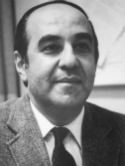Combined surgery, intraoperative brachytherapy, and postoperative external radiation in stage III non‐small cell lung cancer Conference Paper
| Authors: | Hilaris, B. S.; Gomez, J.; Nori, D.; Anderson, L. L.; Martini, N. |
| Title: | Combined surgery, intraoperative brachytherapy, and postoperative external radiation in stage III non‐small cell lung cancer |
| Conference Title: | Joint Meeting of the Society of Surgical Oncology and the Society of Head and Neck Surgeons |
| Abstract: | From March 1977 to December 1980, 318 patients with Stage III non‐small cell lung cancer underwent thoracotomy at Memorial Sloan‐Kettering Cancer Center. One hundred of these patients, considered for this study, were treated by a multimodality approach consisting of resection and/or intraoperative brachytherapy followed by postoperative external irradiation. The criteria for utilizing intraoperative brachytherapy and postoperative external irradiation were either the presence of residual gross disease (47%) or close resection margins suspected to be involved by the tumor (53%). The intraoperative brachytherapy consisted of a temporary iridium 192 implant for subclinical disease in the mediastinum (median dose, 30 Gy in 3–5 days) and a permanent iodine 125 implant for residual gross disease usually at the primary site (median dose, 160 Gy). All patients received postoperative external beam irradiation consisting of 30 to 40 Gy in 2 to 4 weeks. Seven patients (7%) experienced mild to severe complications after these treatments. The local control, when all gross disease had been removed, was influenced by the presence or absence of tumor at the margins of resection (53% and 89%, respectively). The local control in the patients with gross residual disease treated by brachytherapy and postoperative external irradiation, (40 Gy in 4 weeks) was 72%. The actuarial overall 5‐year survival was 22%. The 5‐year survival was better in patients who had all gross disease removed as compared with patients who had gross residual disease (30% versus 13%). The disease‐free survival in these two groups was 27% and 12%, respectively. This review shows that complete resection and moderate doses of postoperative external irradiation achieves a satisfactory local control and improves survival. When all gross disease cannot be removed, then brachytherapy and postoperative external irradiation may achieve similar local control. Distant metastases still remain a major problem in these patients. Cancer 55:1126‐1231, 1985. Copyright © 1985 American Cancer Society |
| Keywords: | survival; adult; aged; middle aged; major clinical study; postoperative period; carcinoma, squamous cell; postoperative care; combined modality therapy; intraoperative care; adenocarcinoma; metastasis; radiation; thoracotomy; lung neoplasms; lung cancer; iodine 125; brachytherapy; radioisotope; therapy; iridium 192; carcinoma, small cell; respiratory system; actuarial analysis; humans; prognosis; human; male; female; priority journal |
| Journal Title | Cancer |
| Volume: | 55 |
| Issue: | 6 |
| Conference Dates: | 1984 May 13-17 |
| Conference Location: | New York, NY |
| ISBN: | 0008-543X |
| Publisher: | Wiley Blackwell |
| Date Published: | 1985-03-15 |
| Start Page: | 1226 |
| End Page: | 1231 |
| Language: | English |
| DOI: | 10.1002/1097-0142(19850315)55:6<1226::Aid-cncr2820550614>3.0.Co;2-6 |
| PUBMED: | 2982474 |
| PROVIDER: | scopus |
| DOI/URL: | |
| Notes: | Article -- Export Date: 26 October 2021 -- Source: Scopus |
Altmetric
Citation Impact
BMJ Impact Analytics
Related MSK Work







